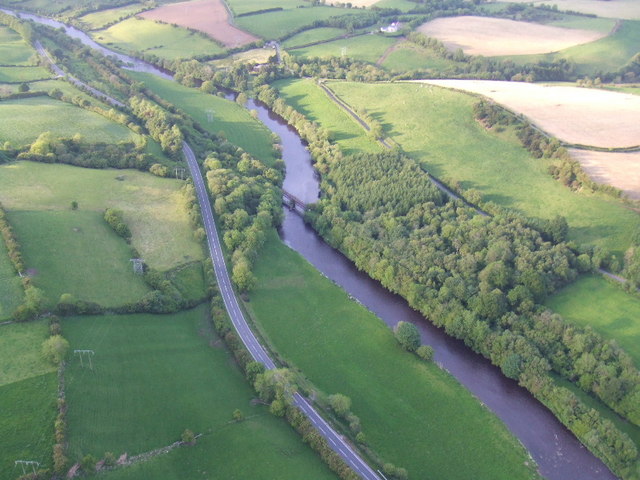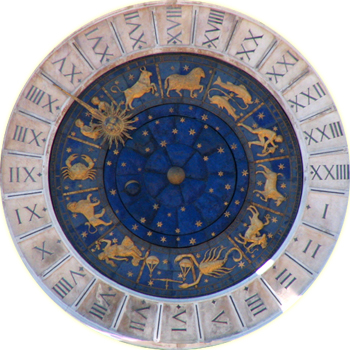|
Ignatius Donnelly
Ignatius Loyola Donnelly (November 3, 1831 – January 1, 1901) was an American Congressman, populist writer, and pseudoscientist. He is known primarily now for his fringe theories concerning Atlantis, Catastrophism (especially the idea of an ancient impact event affecting ancient civilizations), and Shakespearean authorship. These works are widely regarded as examples of pseudoscience and pseudohistory. Donnelly's work corresponds to the writings of late-19th and early-20th century figures such as Helena Blavatsky, Rudolf Steiner, and James Churchward. Life and career Donnelly was the son of Philip Carrol Donnelly, an immigrant from Fintona, County Tyrone, Ireland who had settled in Philadelphia, Pennsylvania. His sister was the writer Eleanor C. Donnelly. On June 29, 1826, Philip had married Catherine Gavin, who was the daughter of John Gavin, also an immigrant from Fintona, County Tyrone, Ireland. After starting as a peddler, Philip studied medicine at the Philadelphia Col ... [...More Info...] [...Related Items...] OR: [Wikipedia] [Google] [Baidu] |
Minnesota House Of Representatives
The Minnesota House of Representatives is the lower chamber of the U.S. state of Minnesota's Minnesota Legislature, legislature. It operates in conjunction with the Minnesota Senate, the state's upper chamber, to write and pass legislation, which is then subject to approval by the governor of Minnesota. Established in 1858, the Minnesota House of Representatives has 134 members elected from single-member districts across the state. Representatives serve two-year terms without term limits, with all seats up for election every two years. The House is led by the Speaker, who is elected by members of the House, while political party leadership is governed by the Majority and Minority Leaders. The Minnesota House of Representatives meets in the north wing of the Minnesota State Capitol, State Capitol in Saint Paul, Minnesota, Saint Paul. Member and staff offices, as well as most committee hearings, are in the nearby State Office Building. History The Minnesota House of Representativ ... [...More Info...] [...Related Items...] OR: [Wikipedia] [Google] [Baidu] |
Fringe Theories
A fringe theory is an idea or a viewpoint that differs significantly from the accepted scholarship of the time within its field. Fringe theories include the models and proposals of fringe science, as well as similar ideas in other areas of scholarship, such as the humanities. In a narrower sense, the term ''fringe theory'' is commonly used as a pejorative, roughly synonymous with the terms pseudo-scholarship and conspiracy theory. Precise definitions distinguishing widely held viewpoints and unaccepted theories are Demarcation problem, difficult to construct. Issues of false balance or false equivalence can occur when fringe theories are presented as being equal to widely accepted theories. Definitions Fringe theories are ideas which depart significantly from a prevailing or wikt:mainstream, mainstream theory. A fringe theory is neither a majority opinion nor that of a respected minority. In general, the term ''fringe theory'' is closer to the popular understanding of the word '' ... [...More Info...] [...Related Items...] OR: [Wikipedia] [Google] [Baidu] |
Eleanor C
Eleanor () is a feminine given name, originally from an Old French adaptation of the Old Provençal name ''Aliénor''. It was the name of a number of women of royalty and nobility in western Europe during the High Middle Ages">Provençal dialect">Provençal name ''Aliénor''. It was the name of a number of women of royalty and nobility in western Europe during the High Middle Ages. The name was introduced to England by Eleanor of Aquitaine, who came to marry Henry II of England, King Henry II. It was also borne by Eleanor of Provence, who became queen consort of England as the wife of Henry III of England, King Henry III, and Eleanor of Castile, wife of Edward I. The name was popular in the Anglosphere during the first half of the 20th century, but declined in use until the late 20th century and first decades of the 21st century. It has been a well-used name in the United States, Canada, the United Kingdom, Australia and New Zealand during the 2020s. Eleanor was the third most p ... [...More Info...] [...Related Items...] OR: [Wikipedia] [Google] [Baidu] |
Ireland
Ireland (, ; ; Ulster Scots dialect, Ulster-Scots: ) is an island in the North Atlantic Ocean, in Northwestern Europe. Geopolitically, the island is divided between the Republic of Ireland (officially Names of the Irish state, named Irelanda sovereign state covering five-sixths of the island) and Northern Ireland (part of the United Kingdomcovering the remaining sixth). It is separated from Great Britain to its east by the North Channel (Great Britain and Ireland), North Channel, the Irish Sea, and St George's Channel. Ireland is the List of islands of the British Isles, second-largest island of the British Isles, the List of European islands by area, third-largest in Europe, and the List of islands by area, twentieth-largest in the world. As of 2022, the Irish population analysis, population of the entire island is just over 7 million, with 5.1 million in the Republic of Ireland and 1.9 million in Northern Ireland, ranking it the List of European islands by population, ... [...More Info...] [...Related Items...] OR: [Wikipedia] [Google] [Baidu] |
County Tyrone
County Tyrone (; ) is one of the six counties of Northern Ireland, one of the nine counties of Ulster and one of the thirty-two traditional counties of Ireland. Its county town is Omagh. Adjoined to the south-west shore of Lough Neagh, the county covers an area of , making it the largest of Northern Ireland's six counties by size, and the second largest county in Ulster after Donegal. With a population of 188,383 as of the 2021 census, Tyrone is the 5th most populous county in both Northern Ireland and Ulster, and the 11th most populous county on the island of Ireland. The county derives its name and general geographic location from Tír Eoghain, a Gaelic kingdom under the O'Neill dynasty which existed until the 17th century. Name The name ''Tyrone'' is derived from the Irish , meaning 'land of Eoghan', the name given to the conquests made by the from the provinces of and Ulaid. Historically, it was anglicised as ''Tirowen'' or ''Tyrowen'', which are closer to the Irish ... [...More Info...] [...Related Items...] OR: [Wikipedia] [Google] [Baidu] |
Fintona
Fintona (; ), is a village and townland in County Tyrone, Northern Ireland. Its population at the 2011 Census was 1,164. Name and etymology Fintona is derived Phonetics, phonetically from the Irish name of the area, ''Fionntamhnach''; this is often translated to mean "white field" however other meanings have been recorded due to various English translations for "fionn" and "tamhnach". "Fionn" may refer to a colour that is described as white, bright, blonde or fair-coloured, while "tamhnach" may refer to a field, clearing, oasis, grassy upland or arable place in a mountain. In the past, the English spelling of the area has varied, with ''"Findonagh"'' in use as recently as 1937 in Church of Ireland documents, while ''"Fentonagh"'' and ''"Fintonagh"'' were also in use in the 19th century. The current spelling of Fintona has been recorded as first used in 1774. History The local area has been known to have had human activity for around 4000 years; there are many burial places, s ... [...More Info...] [...Related Items...] OR: [Wikipedia] [Google] [Baidu] |
James Churchward
James Churchward (27 February 1851 – 4 January 1936) was a British writer, inventor, engineer, and fisherman. Churchward is most notable for proposing the existence of a Lost lands, lost continent, called "Mu (mythical lost continent), Mu," in the Pacific Ocean. His writings on Mu are considered to be pseudoscience.Martin Gardner, Gardner, Martin. (1957). ''Fads and Fallacies in the Name of Science''. Dover Publications. p. 170. Brian M. Fagan, Fagan, Brian M. (1996). ''The Oxford Companion to Archaeology''. Oxford University Press. p. 582. Life Churchward was born in Bridestow, Okehampton, Devon at Stone House to Henry and Matilda (née Gould) Churchward. James had four brothers and four sisters. In November 1854, his father Henry died and the family moved in with Matilda's parents in the hamlet of Kigbear, near Okehampton. Census records indicate the family moved to London when James was 18, after his maternal grandfather George Gould died. His younger brother Albert Church ... [...More Info...] [...Related Items...] OR: [Wikipedia] [Google] [Baidu] |
Rudolf Steiner
Rudolf Joseph Lorenz Steiner (; 27 or 25 February 1861 – 30 March 1925) was an Austrian occultist, social reformer, architect, esotericist, and claimed clairvoyant. Steiner gained initial recognition at the end of the nineteenth century as a literary critic and published works including '' The Philosophy of Freedom''. At the beginning of the twentieth century he founded an esoteric spiritual movement, anthroposophy, with roots in German idealist philosophy and theosophy. His teachings are influenced by Christian Gnosticism or neognosticism.Sources for 'Christian Gnosticism': Many of his ideas are pseudoscientific. He was also prone to pseudohistory.Sources for 'pseudohistory': In the first, more philosophically oriented phase of this movement, Steiner attempted to find a synthesis between science and spirituality. His philosophical work of these years, which he termed " spiritual science", sought to apply what he saw as the clarity of thinking characteristic of West ... [...More Info...] [...Related Items...] OR: [Wikipedia] [Google] [Baidu] |
Helena Blavatsky
Helena Petrovna Blavatsky (; – 8 May 1891), often known as Madame Blavatsky, was a Russian-born Mysticism, mystic and writer who emigrated to the United States where she co-founded the Theosophical Society in 1875. She gained an international following as the primary founder of Theosophy as a belief system. Born into an aristocratic family in Yekaterinoslav, Blavatsky traveled widely around the empire as a child. Largely self-educated, she developed an interest in Western esotericism during her teenage years. According to her later claims, in 1849 she embarked on a series of world travels, visiting Europe, the Americas, and India. She also claimed that during this period she encountered a group of spiritual adepts, the "Masters of the Ancient Wisdom", who sent her to Shigatse, Tibet, where they trained her to develop a deeper understanding of the synthesis of religion, philosophy, and science. Both contemporary critics and later biographers have argued that some or all o ... [...More Info...] [...Related Items...] OR: [Wikipedia] [Google] [Baidu] |
Pseudohistory
Pseudohistory is a form of pseudoscholarship that attempts to distort or misrepresent the historical record, often by employing methods resembling those used in scholarly historical research. The related term cryptohistory is applied to pseudohistory derived from the superstitions intrinsic to occultism. Pseudohistory is related to pseudoscience and pseudoarchaeology, and usage of the terms may occasionally overlap. Although pseudohistory comes in many forms, scholars have identified common features in pseudohistorical works. Pseudohistory is almost always motivated by a contemporary political, religious, or personal agenda. It frequently presents sensational claims or a big lie about historical facts which would require unwarranted revision of the historical record. Another hallmark is an underlying premise that scholars have a furtive agenda to suppress the promoter's thesis—a premise commonly corroborated by elaborate conspiracy theories. Works of pseudohistory often ... [...More Info...] [...Related Items...] OR: [Wikipedia] [Google] [Baidu] |
Pseudoscience
Pseudoscience consists of statements, beliefs, or practices that claim to be both scientific and factual but are incompatible with the scientific method. Pseudoscience is often characterized by contradictory, exaggerated or unfalsifiable claims; reliance on confirmation bias rather than rigorous attempts at refutation; lack of openness to evaluation by other experts; absence of systematic practices when developing hypotheses; and continued adherence long after the pseudoscientific hypotheses have been experimentally discredited. It is not the same as junk science. The demarcation between science and pseudoscience has scientific, philosophical, and political implications. Philosophers debate the nature of science and the general criteria for drawing the line between scientific theories and pseudoscientific beliefs, but there is widespread agreement "that creationism, astrology, homeopathy, Kirlian photography, dowsing, ufology, ancient astronaut theory, Holocaust den ... [...More Info...] [...Related Items...] OR: [Wikipedia] [Google] [Baidu] |
Shakespearean Authorship
William Shakespeare ( 23 April 1564 – 23 April 1616) was an English playwright, poet and actor. He is widely regarded as the greatest writer in the English language and the world's pre-eminent dramatist. He is often called England's national poet and the "Bard of Avon" or simply "the Bard". His extant works, including collaborations, consist of some 39 plays, 154 sonnets, three long narrative poems and a few other verses, some of uncertain authorship. His plays have been translated into every major living language and are performed more often than those of any other playwright. Shakespeare remains arguably the most influential writer in the English language, and his works continue to be studied and reinterpreted. Shakespeare was born and raised in Stratford-upon-Avon, Warwickshire. At the age of 18, he married Anne Hathaway, with whom he had three children: Susanna, and twins Hamnet and Judith. Sometime between 1585 and 1592 he began a successful career in London as ... [...More Info...] [...Related Items...] OR: [Wikipedia] [Google] [Baidu] |










